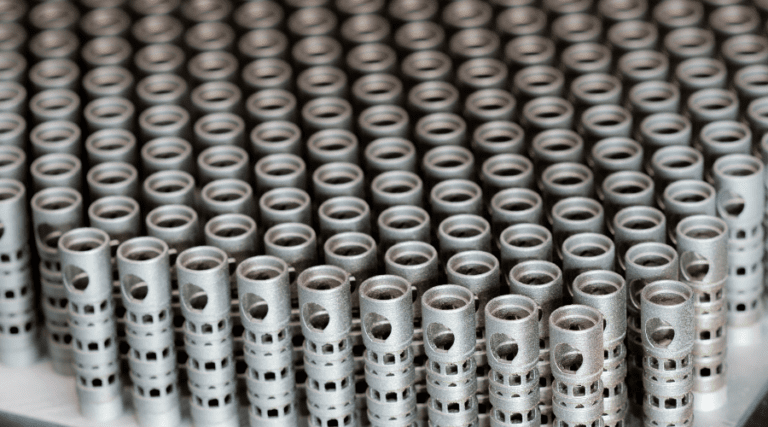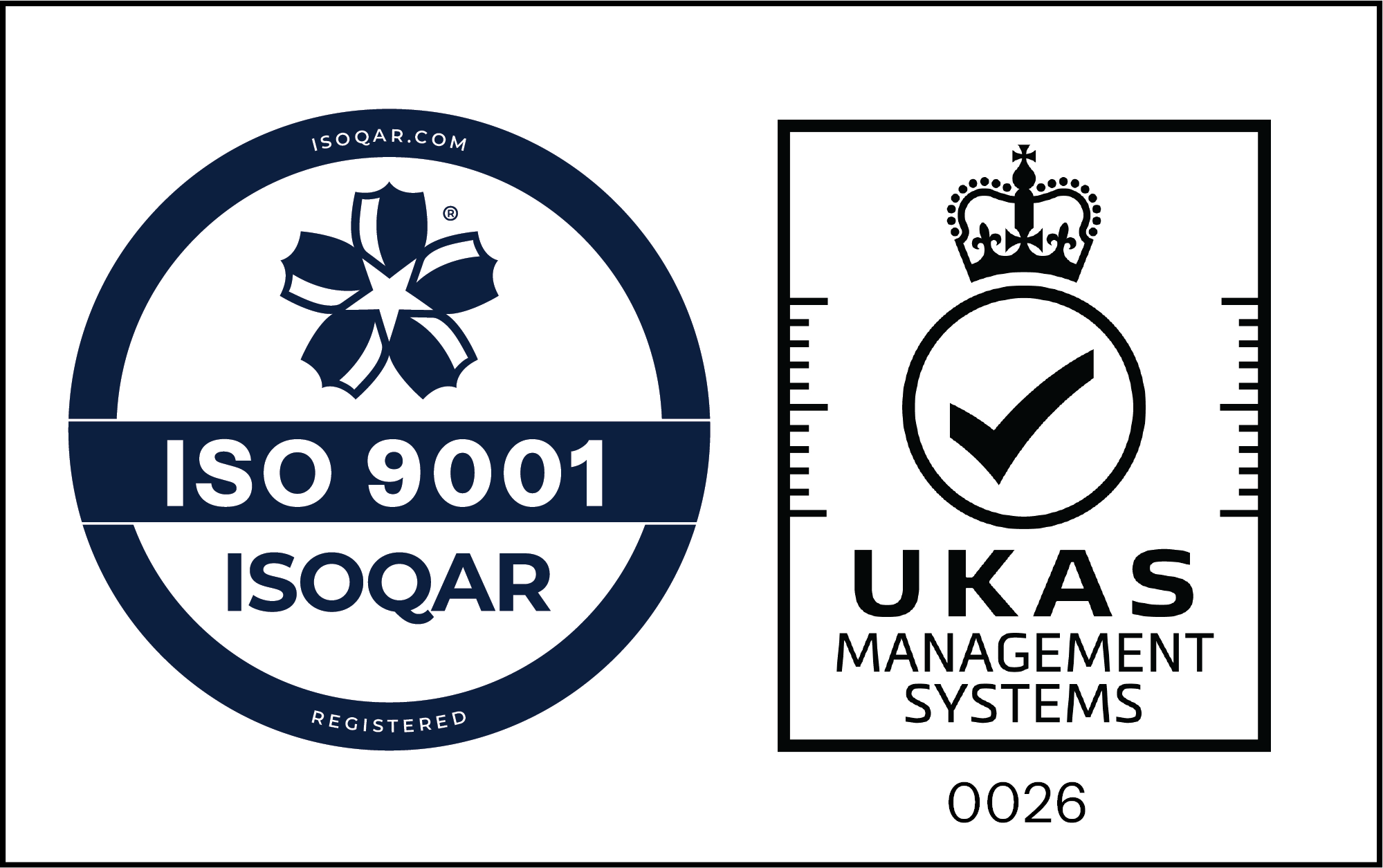In the ever-changing landscape of manufacturing, a transformative technology has emerged that is reshaping and pushing boundaries within the industry. Additive manufacturing (also known more commonly as 3D printing) is an innovative process that represents a shift away from the traditional ways in which things are manufactured. In this article we are going to explain more about what additive manufacturing is, explore the pioneering technology behind it, and how Domin is using it to manufacture ground-breaking hydraulic systems.
What is Additive Manufacturing?
Additive manufacturing is a revolutionary manufacturing process that builds three-dimensional objects layer by layer using various materials like plastics, metal, or ceramics. Unlike traditional subtractive manufacturing, which involves cutting, grinding, or machining material away from a solid block, additive manufacturing adds material incrementally to create the final product.
Since commercialisation in the 1980s, additive manufacturing was initially used to create prototypes that were rarely functional. However, as additive manufacturing has evolved and improved it now offers several advantages, including greater design freedom, reduced waste, and the ability to produce complex geometries that were previously extremely expensive to produce, and it is now used to manufacture market-ready products across a number of industries.
Manufacturers using plastic 3D printing have made great headway in producing market ready products, however, using additive manufacturing to print metal products is very rare. In 2019. Domin was the first company in the world to use metal additive manufacturing to print a mass-produced, market ready product and sell it, and is still one of only a handful of companies using metal additive manufacturing in this way.
Additive Manufacturing Technology
Layer-by-Layer Deposition
At the heart of additive manufacturing technology is layer-by-layer deposition. It begins with a digital 3D model, typically created using computer-aided design (CAD) software. This digital model is then sliced into several horizontal cross-sections, which serve as a blueprint for the printer. The additive manufacturing machine interprets these slices and creates the structure, one layer at a time, until the entire object is constructed.
Material Variety
Additive manufacturing is a versatile technology, capable of using various materials, including metals, ceramics, thermoplastics and even biological materials, such as living cells. This adaptability makes it suitable for a wide range of applications, from consumer goods to components in the automotive sector.
3D Printing Technologies
There are several examples of 3D printing technologies, each with its unique approach to layer deposition. These technologies include Fused Deposition Modelling (FDM), Stereolithography (SLA), Selective Laser Sintering (SLS), and Powder Bed Fusion (PBF), among others. The choice of technology depends on factors such as level of precision required, material requirements and cost considerations.
Powder Bed Fusion (PBF)
Possibly the most common metal 3D printing technique in additive manufacturing is Powder Bed Fusion. Here at Domin, we use a subset of PBF that is Laser Powder Bed Fusion (LPBF) . It manufactures 3D objects by selectively fusing successive layers of powdered metal using a high intensity laser.
This technique starts with the distribution of fine spherical metal powder, on a heated build platform. A controlled laser beam targets specific regions of the powder layer according to a computer-generated 3D model. This precise application of energy melts and solidifies the powder, forming the initial layer of the object. The build platform descends, a new layer of powder is deposited, and the energy source is once again employed to selectively fuse the next layer onto the previous one. This layer-by-layer approach continues until the entire three-dimensional object is created. Excess powder is removed and the build platform which includes the part is removed from the machine, this completes the printing process.
Following the completion of the printing process, post-processing procedures, such as heat treatment, machining, or surface finishing, may be applied to achieve the desired final properties and surface quality of the object. Powder bed fusion may incorporate support structures to maintain the integrity of complex designs, which are subsequently removed after heat treatment or during machining.
Additive Manufacturing Process
The additive manufacturing process includes the following steps:
Design and CAD Modelling
The process begins with the creation of a 3D digital model using CAD software, in order to define the object’s geometry and specifications.
Slicing
The 3D model is then sliced into thin cross-sections (called layers) using slicing software. These layers are then used as instructions for the 3D printer.
Printing
The 3D printer reads the sliced data and creates the object layer by layer, following the pre-defined path and design. This layering process continues until the entire object is created.
Post-Processing
After printing, post-processing may be necessary, depending on the technology and material used. This can involve removing support structures, surface finishing, or heat treatment to enhance material properties. For powder bed fusion, the additional step of excess powder removal is necessary.
Examples of Additive Manufacturing in Industry
Additive manufacturing is fast becoming an exciting, cutting-edge, and important manufacturing technology. There are a number of additive manufacturing examples across a diverse range of industries:
Medical
Additive manufacturing is used in the medical industry to produce patient-specific implants, prosthetics, and surgical instruments.
Consumer Goods
In the consumer sector, companies like Nike have used additive manufacturing to design and produce custom-fit shoes and innovative sportswear.
Aerospace
Companies like Boeing and Airbus use additive manufacturing to create lightweight, complex aircraft components, reducing weight, improving fuel efficiency and, in turn, reducing costs.
Architecture and Construction
Architects and builders are using additive manufacturing to create intricate architectural models and pre-fabricated components.
Automotive
Vehicle manufactures such Ford and BMW use additive manufacturing for rapid prototyping, custom tooling, and manufacturing end-use parts.
Additive Manufacturing in Servo Valves at Domin
Additive Manufacturing is one of our core high-tech technologies and a key part of how we have revolutionised the hydraulics industry. Offering unparalleled advantages in precision and efficiency, additive manufacturing enables us to create very complex architectural structures that are at the heart of the servo valves that we manufacture. Components can be produced with incredible accuracy, reducing the cost and time of production, while also optimising the performance of servo valves and the outcomes for our customers.
Additive manufacturing is revolutionising the way we create products and solve problems across a growing number of diverse industries. With its ability to reduce waste, increase design flexibility, and facilitate rapid manufacturing of high-quality, market-ready products, this technology holds immense promise for the future.
Domin are experts in developing state-of-the-art hydraulic technology that increases the efficiency of systems, fourfold. If you’d like to find out more about how we can help you, then please get in touch.

